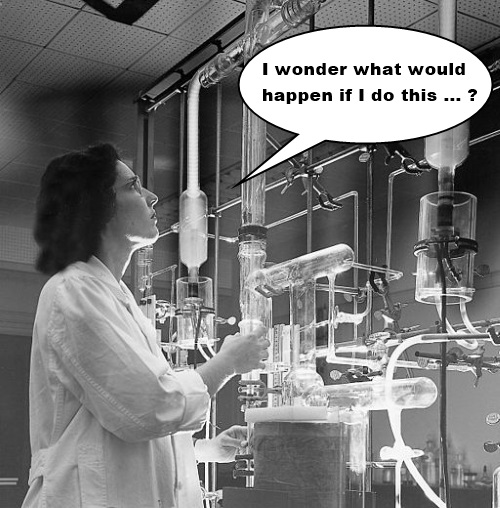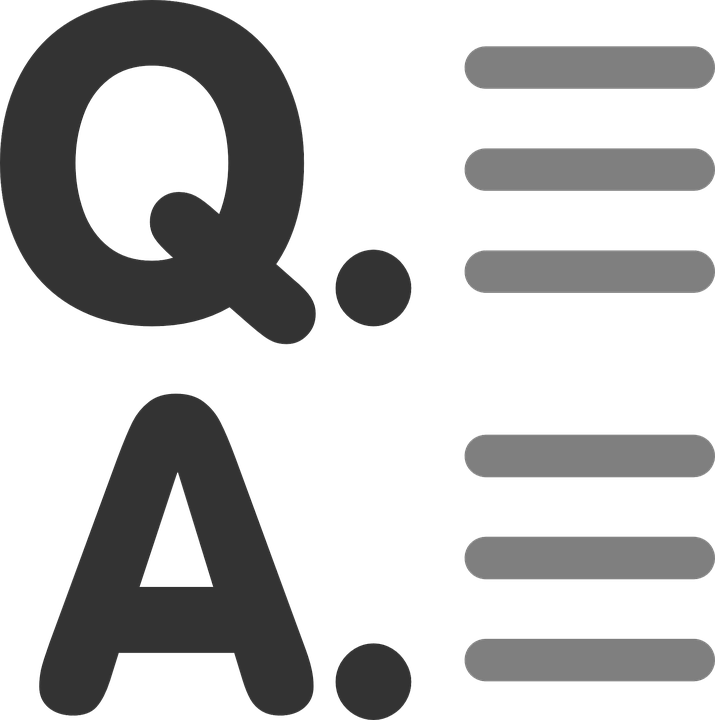Hypothesis: (noun) a supposition or proposed explanation made on the basis of limited evidence as a starting point for further investigation.
Yikes! That sounds pretty serious (and a little intimidating too).
Don’t let it scare you, though. In simpler terms, a hypothesis is an idea of what you think will happen in your experiment or study. You’ll make this prediction after you’ve completed some research but before you’ve conducted your study or experiment.
That doesn’t sound so bad, does it? Learning how to write a hypothesis for your badass research paper isn’t that bad, either. Here’s what to do.
How to Write a Hypothesis for a Badass Research Paper in 3 Steps
Before you start writing, you’ll need to choose a topic.
It’s a given that, if you’re allowed to choose your topic, then you should choose something you’re interested in. You’ll be spending a lot of time with this topic, after all. So don’t research the water quality of a local river if your true passion is soils and sediments.
Have a topic in mind? Fabulous! If not, read How to Choose a Research Paper Topic That Wins Big.
After you’ve decided on a topic, you can start the process of writing your hypothesis. Let’s get to the those 3 steps showing how to write a hypothesis for a badass research paper.
Step #1: Read and analyze the current literature
Read the current literature
No, I don’t mean literature as in Romeo and Juliet. I mean literature as in studies and scholarly writings (such as professional journals and books) about your subject.
Before you can write intelligently about the topic, you need to know as much as possible about it. Become an expert in your subject by reading what others have already written about it.
Remember, this is scientific and scholarly stuff we’re talking about, so don’t think Google will have everything you need. If you insist on using Google, opt for Google Scholar. Better yet, use your school’s databases to research your topic.
Read 5 Best Resources to Help with Writing a Research Paper to learn more about research resources. Just need help assessing the credibility of your sources? Read How to Apply the CRAAP Test to Your Essay Sources.
BONUS RESEARCH TIPS
- When you ultimately write your research paper, you’ll need to have a complete list of sources you’ve consulted. Keep track of your sources by printing or saving documents as you research. That way, it’s easy for you to list them in your bibliography. (Hint: Note-taking is also a great strategy for staying organized!)
- Keep in mind that you might need both a bibliography and a reference page, or simply a reference page. Because you’re writing a scientific paper, you’ll likely need to cite all information in APA format. (Check with your professor to make sure APA is the preferred citation style for your project.)
- Sometimes even a bibliography and a reference page aren’t enough. Your professor might ask for an annotated bibliography before you write your paper. This is essentially a formal list of sources with annotations to summarize and evaluate each source. Learn more about how to write an annotated bibliography by reading How to Write an Annotated Bibliography That Works.
Analyze the current literature
As you read through the literature, take note of what types of experiments and studies have already been completed.
You don’t want to duplicate previous research (unless, of course, you feel the study was somehow completed incorrectly or it failed to analyze specific information).
Look for fresh angles on the topic to see where you might add to the current studies or create something completely new.
For instance, let’s say you’re studying sleep patterns. You decide to focus on the correlation between electronic devices and sleep patterns. If all of the current literature focuses on teens and adults, but you can’t find any research on children under the age of 10, this could be your chance to develop an entirely new study.
Step #2: Develop questions and look for answers
With a general idea of your research study in place, start asking questions about your subject. These will be questions that aren’t likely already answered in the literature you’ve just read. They’re questions you want to (hopefully) find the answers to.
These questions will be your research questions.
Here’s a quick example. If all of the information you’ve read states that teens and adults who use electronic devices immediately before bedtime have trouble falling asleep, staying asleep, and/or getting restful sleep, you might wonder whether the same is true for young children.
Based on this information, you might ask the following research question:
- Do children under 10 have difficulty falling asleep, staying asleep, and/or getting restful sleep if they use electronic devices immediately before bedtime?
This research question is simple yet effective, for a few reasons:
- It examines a new group of people that has not been studied.
- It’s relevant to children, parents, and society at large.
- It can be tested.
Step #3: Write the hypothesis
The hypothesis is essentially your prediction based on what you’ve already learned from your research. It’s also what you’ll test as part of your study.
A hypothesis often follows an “if/then” format. If this happens, then that may happen.
If you don’t write your research paper, then you will fail the class.
Here’s another example based on the topic of using electronic devices before bedtime.
If the literature states:
- Teens and adults who use electronic devices immediately before bedtime have trouble falling asleep, staying asleep, and/or getting restful sleep.
And if your research question asks:
- Do children under 10 have difficulty falling asleep, staying asleep, and/or getting restful sleep if they use electronic devices immediately before bedtime?
Then your hypothesis might read:
- If children under 10 use electronic devices immediately before bedtime, then they will have difficulty falling asleep, staying asleep, and/or getting restful sleep.
Keep in mind that your hypothesis might end up being wrong. In this case, it’s okay to be wrong.
If you discover that kids who spend an hour on their tablets immediately before bed are likely to fall asleep faster and stay asleep longer, great! Parents everywhere will be thanking you for finding a way to get their kids to go to sleep.
Remember, the goal is not to prove you’re right. The goal is to test your hypothesis. If you’re wrong, the next step is to begin the research process again by creating new research questions, a new hypothesis, and another study. (But we’ll worry about that another time.)
Writing the Badass Research Paper

Writing a badass hypothesis is one thing, but writing a badass research paper is another.
Now that you’ve learned how to write a hypothesis, then what? What do you do after you’ve written your hypothesis?
Start creating your study. You might need to set up experiments or write survey questions and then figure out the best way to complete the study.
If you need to write survey questions, read 2 Types of Sample Survey Questions for Your Research Paper and How to Write Perfect Survey Questions for Your Paper.
After the study is complete, you’ll need to write the paper. Here a few resources to help you along the way:
- How to Write a Research Paper: A Step-by-Step Guide
- How to Craft a Research Paper Outline
- How to Write APA Citations in 4 Easy Steps
Remember: IF you need help with revision and editing, THEN you should certainly send your paper to a Kibin editor to make sure that it truly is badass!

